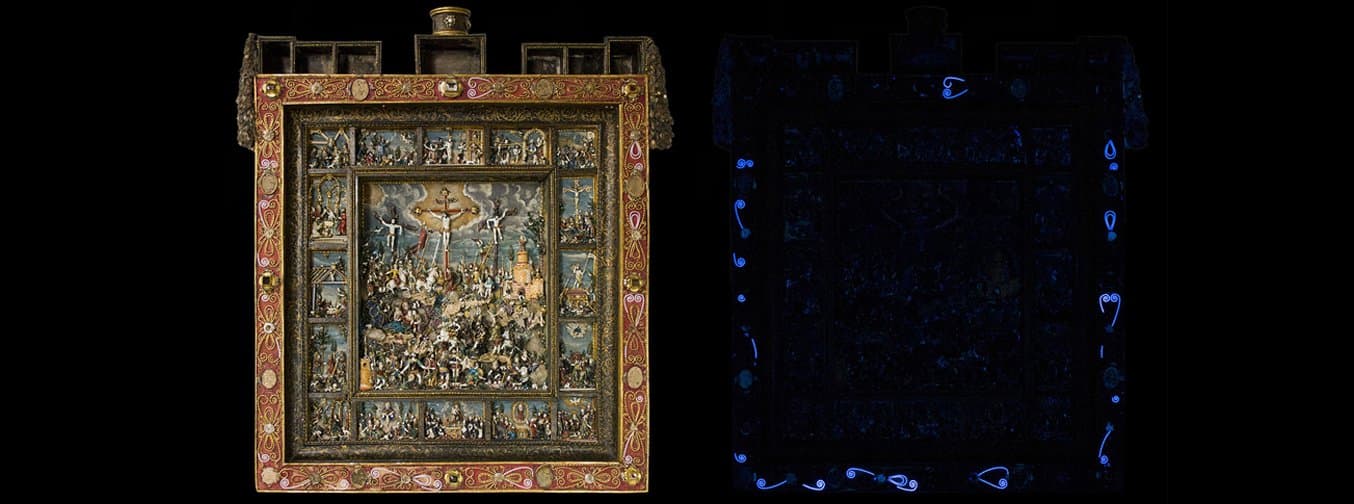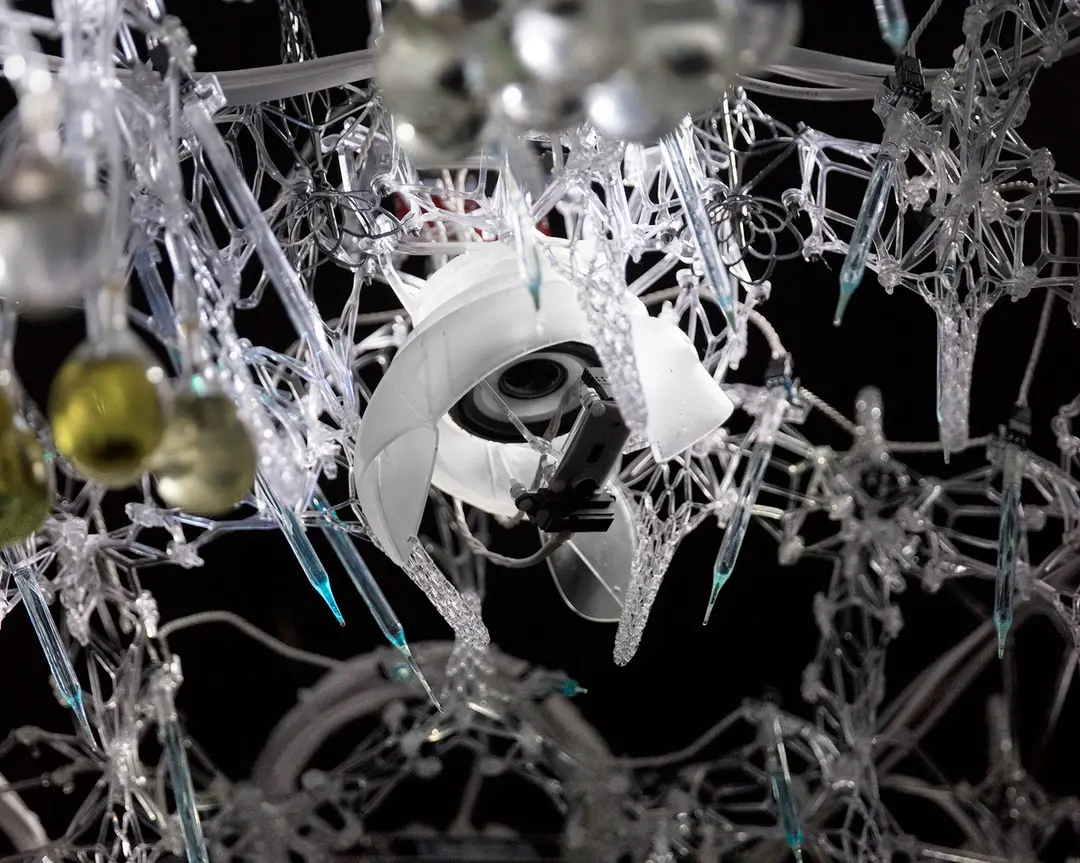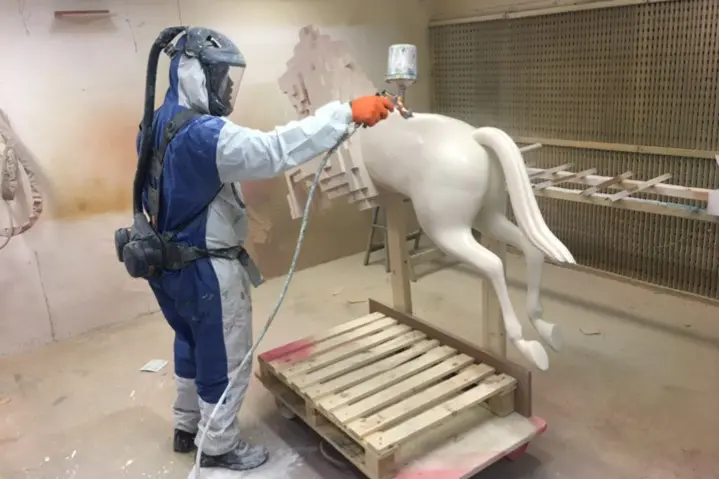
The next time you go to a museum, bring a UV light—some of the historical artworks around you might be hiding clues from modern technologies that didn’t exist just a few years ago.
Mattia Mercante is a restorer of cultural heritage who collaborates mainly with the Opificio delle Pietre Dure institute in Florence, Italy. He’s been using modern digital tools like 3D scanning, computer-aided design, and 3D printing to restore artworks from the most brilliant artists and sculptors of the Renaissance, including Michelangelo and Leonardo da Vinci.
These digital tools empower restorers to emulate the technical virtuosity of the masters, and restore intricate details that would be impossible to reproduce in any other way, so that today we can enjoy art pieces in their splendour and entirety the way their creators intended.
Read on to dive into the hidden and mysterious world of art restorations, and learn how modern technologies help preserve our cultural heritage.
Introducing Digital Technologies to a Traditional Field
After a brief trial with architecture, Mercante studied art restoration at the Opificio, one of the most prestigious public institutes in the field.
Mercante was initially interested in 3D modeling for digital sculpting and later experimented with scanning and 3D printing as these technologies gained traction in the consumer space, before deciding to try them out in his professional work.
“I started using the scanning and 3D printing technologies due to the practical need to solve some of the issues with the documentation, enhancement, and preservation of cultural heritage. We started with using 3D scanners for the evaluation of artworks, then digital modeling software became part of the workflow, and now it’s completed with 3D printing,” says Mercante.
“Since the early years of my studies, my goal has been to demonstrate how those involved in cultural heritage restoration can directly and autonomously implement the modern digital tools available today into their workflow, without needing to rely on outsourcing to professionals.”
So, what does the process of restoring artwork look like?

Evaluating the Artwork
The first step of a restoration project is for qualified technical inspectors to evaluate the state and condition of artwork in cooperation with the restorers.
“We work to solve three types of problems: urgency, prevention, and enhancement. Urgency means that if the artwork needs to be restored quickly to be saved, we must give it priority. If we think that its condition might deteriorate in the near future, we proceed with the restoration for prevention. At last, if an artwork will be exhibited or it’ll be part of a study, it needs to be prepared for such special situations, which we call enhancement.”
The only thing that can limit or block a restoration is if the intervention risks damage to the artwork and its material integrity. Interventions should only be carried out if they’re necessary for the proper preservation and future survival of the artwork.
Scanning, Modeling, and 3D Printing
A crucial element of the work is scanning, which helps to minimize the interpretation of forms by using existing parts of sculptures as a basis for subsequent restorations.
“Digital scanning and modeling guarantee greater respect for the original artistic style. Restorers are art technicians, not painters or sculptors—the interpretative and creative aspects shouldn’t influence our work,” elaborates Mercante.
After scanning, restorers proceed to study the issues and evaluate possible enhancements. The final stage is the realization, when they create documentation, design the shapes, and complete the restorations. 3D printing is used to create prototypes for quality control and pre-visualization, and also for final material restorations.

A restoration that involves cleaning, consolidating, material restoration, and chromatic integration requires five or six months on average, but more complex projects can take more than a year.
Making Impossible Restorations Possible
Restoration subjects range from the archaeological to the contemporary. Mercante specializes in the restoration of terracotta, plaster, glass, and wax sculptures, but scanning and 3D printing are involved in projects that include a wider range of artistic artifacts.
One of Mercante’s recent projects was a restoration of a multi-material reliquary (glass, fabric, metal, rock crystal, limestones, and shells) for the Museum Tesoro dei Granduchi of Palazzo Pitti in Florence. The reliquary features the crucifixion of Christ in the center, and its wooden frame is divided into small cells, each one representing a rosary scene.

The frame is enriched with intricate glass decorations of about 1 to 1.5 mm in diameter; small flame-heated sticks were bent and twisted to create curls. The reliquary has been restored in the past, but the missing decorations of the frame have not been reconstructed, due to complexity of the features and the lack of techniques that could guarantee a safe and secure recovery.

“Our work as restorers is not only to preserve the existing, but also to allow visitors to correctly read and interpret the artwork. Thanks to our Formlabs 3D printers in the Opificio laboratory, I was able to reconstruct the missing decorations of the frame, 3D print them using Formlabs’ Standard White Resin, which we then colored in gold and inserted into the artwork. The restorations are visible under UV light, which makes it simple to identify and reverse them if needed,” says Mercante.

“The presence of digital technologies in the lab allows me to make constant modifications and work in an entirely independent way, thinking directly about quick and efficient solutions. In the past, it was not possible to carry out some of our projects due to the time constraints and costs of external services. If I have to think about facing the same workflow without using these digital tools, I think I would have given up on many projects.”
In one such case, the reconstruction of a 17th-century wood carving artwork was only possible with the use of scanning and 3D printing.
 source)“>
source)“>“The Panel of Cosimo III”, made by the English wood-carving master Grinling Gibbons, is a large panel full of details and technical virtuosity that is extremely difficult to reproduce. The work has undergone several restorations over time, but restorers never attempted to replace the missing decoration because of the extreme technical difficulty of carving the wood with the same skill as the master at the court of King Charles II of England. Several solutions have been proposed over the years, but nothing was deemed satisfactory.

In 2016, thanks to the presence of 3D scanners and 3D printers in Opificio’s lab, Mercante and his colleague Cristina Gigli created a “virtual cast” based on similar decoration within the piece and elaborately modified it to fit into the incomplete area.
“We 3D printed the design, painted it to match the color of the wood, and mounted it on the artwork. This both solved the issue of artistic interpretation of the piece and helped us overcome the technical obstacles of the complex wood carving,” says Mercante.
Versatile Tools in the Hands of a Restorer
Mercante found that stereolithography 3D printed parts provide high surface quality and rich details—with a bit of finishing, they’re immediately usable for reconstructions. 3D prints can also be used to create molds to cast in the original material, even metals.

Recently, Mercante completed a project for a private client in collaboration with restorer colleagues Acerina Garcia Garcia and Edoardo Radaelli. The work involved reconstructing the fingers of a marble funeral sculpture at the Borromeo d’Adda Chapel in Arcore, near Milan. From the 3D scan of the fractured hand and a chalk sketch stored in another museum, the team redesigned the whole set of fingers, with particular attention to the proportions and style of the artist, Vincenzo Vela.
“We 3D printed the reconstructions, painted them to match the color of the marble, and attached them directly to the artwork in a non-invasive and reversible way using small magnets,” says Mercante.

Last year, Mercante was involved in the documentation and restoration of an artificial cave from the 17th century with fellow restorer Alice Maccoppi. Created originally as a place of recreation, the cave is covered with shells and limestone creations.

To reconstruct the missing decorations, Mercante scanned portions of the wall where the shells remained intact, and isolated them from the context by 3D editing. He 3D printed the shells at 1:1 scale, which Maccoppi then used to create molds for casting in geopolymer materials.

The Future of Art Restoration
Coming from a traditional field, many art restorers are hesitant to implement new tools into their workflow. Mercante believes some of these restorers hold misconceptions that scanners and 3D printers make restorative work sterile and mechanical. However, skepticism is decreasing due to the ever-increasing quality and growing potential offered by modern technologies.
“The most important consideration is the preservation of the artwork. If digital techniques and tools improve this aspect, they are welcome. From the technical and theoretical point of view, restorations have everything to gain and nothing to lose,” says Mercante.
“3D printers must not be the end, but the means. They are instruments in the hands of the restorer, which provide additional solutions that they can use to transfer their knowledge, craft, and virtuosity directly, and adapt it to the needs of the artwork. With the support of digital tools, it is possible to reach higher levels of excellence, so I encourage restorers to use them—the resulting time and cost savings are well worth it.”
Mercante hopes digital technologies will become more widespread and an integral part of more and more restorers’ technical toolkit.
“Since 2015, I’ve been committed to working with public institutions such as the Opificio delle Pietre Dure to implement scanners and 3D printers. I hope that we can create a department within the institute that would become a self-sufficient provider of digital scanning, 3D printing, and modeling services specialized in cultural heritage restoration.”

